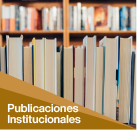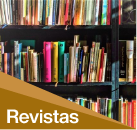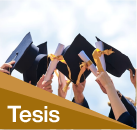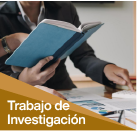Mostrar el registro sencillo del ítem
Vinculación de los Cuentos Tradicionales del Cusco con la Estrategia Pedagógica de los Cuentos de Mesa
| dc.contributor.advisor | Climent Pérez, Marta | |
| dc.contributor.author | Solorzano Mendoza, Sheyla Shomara | es_PE |
| dc.date.accessioned | 2025-06-11T22:05:16Z | |
| dc.date.available | 2025-06-11T22:05:16Z | |
| dc.date.issued | 2025-06-13 | |
| dc.identifier.uri | http://repositorio.pukllasunchis.org/xmlui/handle/PUK/203 | |
| dc.description.abstract | La estrategia de los cuentos de mesa es una forma en la que los niños pueden llegar a interiorizar cada uno de los cuentos que se les ofrece, cabe resaltar que en esta estrategia se elige un solo cuento para todo un mes, la forma de escoger el cuento de mesa es de acuerdo a las fechas del calendario y actividades realizadas propios de este mes. Además de generar beneficios múltiples, como son la memoria activa, la imaginación, creatividad, escucha y poder interiorizar y hacer suyos cada uno de los cuentos. Por otro lado, se observó la gran deficiencia de dos grandes temas que me ayudaron a realizar este trabajo de investigación, el primer problema es la forma “tradicional” en la que las maestras suelen contar o presentar un cuento a los niños más pequeños, siendo la maestra el foco central de atención, ya que ella es la que realiza todo el proceso netamente de lectura, las herramientas que suelen utilizar las maestras o son muy informativas para los niños o, por el contrario, carece de herramientas para el momento del cuento. Pude analizar que las herramientas típicas durante el cuento son la lectura oral, mediante imágenes impresas o TV. Por otro lado, está la deficiencia en los cuentos tradicionales andinos, ya que estos no son usados en los jardines y tampoco se les da la importancia debida. Los niños en esta etapa necesitan formas diversas de escuchar u observar los cuentos y que también puedan utilizar sus propios cuentos andinos, de su entorno. Los cuales les ayudarán a valorar sus tradiciones y riquezas, además de conocerlas y disfrutarlas. Es por esto que decidí realizar este trabajo de investigación donde se vinculan estos dos aspectos muy importantes y poder trabajarlo de la mano para plantear una nueva estrategia para contar los cuentos tradicionales, para que sea más divertida y dinámica para los niños Esta investigación promueve una forma de contar cuentos más atractiva y con más beneficios en los niños, a su vez que puedan aprender desde lo suyo, como son las actividades agrícolas, ganaderas o actividades que sus antepasados realizaban. Este trabajo tiene la finalidad de poder generar una nueva estrategia pedagógica que sea de ayuda para las maestras para los momentos de contar cuentos. Y poder hacerlo con los cuentos tradicionales que puedan recopilar. Además, que los niños podrán escuchar los cuentos tradicionales a través del cuento en el aula y no solo se realice fuera del jardín, haciendo que revaloren y recuerden estos cuentos y no se pierdan u olviden. | es_PE |
| dc.description.abstract | Abstract The table story strategy is a way in which children can internalize each of the stories that are offered to them. It is worth highlighting that in this strategy, only one story is chosen for an entire month. The way to choose the table story is according to the calendar dates and activities carried out for this month. In addition to generating multiple benefits, such as active memory, imagination, creativity, listening and being able to internalize and make each of the stories their own. On the other hand, I was able to observe the great deficiency of two major themes that helped us to carry out this research work. The first problem is the “traditional” way in which teachers usually tell or present a story to younger children, with the teacher being the central focus of attention, since she is the one who carries out the entire reading process. The tools that teachers usually use are either very informative for children or, on the contrary, they lack tools for the story time. I was able to analyze that the typical tools during the story are oral reading, through printed images or TV. On the other hand, there is a deficiency in traditional Andean stories, since these are not used in kindergartens and are not given the importance they deserve. Children at this stage need different ways to listen to or observe stories and also to be able to use their own Andean stories, from their environment. These will help them to value their traditions and riches, as well as to know and enjoy them. This is why it was decided to carry out this research work where these two very important aspects are linked and to be able to work on them hand in hand to propose a new strategy to tell traditional stories, so that it is more fun and dynamic for children. This research promotes a more attractive way of telling stories with more benefits for children, while they can learn from their own, such as agricultural, livestock activities or activities that their ancestors carried out. This work has the purpose of being able to generate a new pedagogical strategy that is helpful for teachers for storytelling moments. And to be able to do it with the traditional stories that they can collect. In addition, children will be able to listen to traditional stories through storytelling in the classroom and not just outside the kindergarten, making them revalue and remember these stories so they do not get lost or forgotten. | es_PE |
| dc.description.abstract | Pisiy rimayllapi Mesapi willakuy estrategia nisqa, warmakuna sapakama willakuykunata ukhunchanankupaq, chaywanmi qawarina, kay estrategiapiqa huk killa huntapaqmi huk willakuylla akllasqa kachkan, chayman hinam mesapi willakuy akllanapaq chay calendario punchawkuna hinaspa ruwaykuna kay killapi ruwasqa. Askha allinkuna paqarichiymanta aswantaqa, ahinataq yuyariy activo, imaginación, creatividad, uyariy hinaspa sapa willakuykunata ukhuman churayta hinaspa kikiykipaq ruwayta atiy. Hukninpiqa, iskay hatun asuntokunapa hatun pisiyaynintam qawayta atirqani, chaykunam yanapawarqaku kay investigacion llamkayta ruwanaykupaq, punta kaq sasachakuyqa “tradicional” nisqam, chaypim yachachiqkuna aswan sullka warmakunaman willakuyta willakunku utaq qawachinku, chaymi yachachiqmi aswan allin qhawarisqa, paymi llapan ñawinchay ruwayta ruwan, chaymi yachachiqkunaq utilizasqanku herramientakunaqa wawakunapaqqa ancha willakuqmi otaq aswanpas, manan kanchu willakuy tiempopaq herramientakuna . Willakuy kachkaptin chay herramientas típicas nisqakunaqa oral nisqa ñawinchaymi, impreso imaymanakuna utaq TV nisqawanmi analizayta atirqani. Huk ladumantaq, ñawpaqmantapacha andino willakuykunapi pisiyaynin kachkan, chaykunataqa mana huertapi apaykachakunchu, manataq allintachu qhawarinku. Kay etapapi wawakunaqa imaymanata necesitanku uyarinankupaq utaq qhawanankupaq willakuykunata hinallataq atinankupaq kikinkupaq andino willakuyninkuta, pachamamankumanta. Chaytaq yanapanqa tradicionninkuta, qhapaq kayninkuta chaninchanankupaq, chaymantapas riqsinankupaq, kusikunankupaqpas. Kayraykum kay investigacion llamkayta ruwanankupaq tantearqaku maypichus kay iskay ancha importante aspectokuna tinkisqa kachkanku, chaynallataqmi makipura llamkayta atirqaku, chaynapi musuq estrategia nisqa ñawpaqmantaraq willakuykunata willanapaq, chaynapi warmakunapaq aswan kusikuypaq hinaspa kallpasapa kananpaq. Kay maskayqa aswan munay willakuykunatam kallpanchan, aswan allin warmakunapaq, chaynallataqmi saqillan ima ruwasqankumanta yachanankupaq, ahinataq chakra llamkaymanta, uywa uywaymanta utaq ñawpaq taytankupa ruwasqan ruwaykunamanta. Kay llamkayqa musuq estrategia pedagógica nisqa paqarichiyta atinanpaqmi, chaymi yachachiqkunapaq yanapakun willakuy willakuy pachakunapi. Hinallataq huñuyta atisqanku ñawpaqmanta pacha willakuykunawan ruwayta atinankupaq. Chaymantapas, warmakunaqa uyariyta atinqakum ñawpaqmantaraq willakuykunata chay willakuywan aula ukupi hinaspa mana huerta hawallapichu, chaywanmi musuqmanta chaninchanqaku hinaspa yuyarinqaku kay willakuykunata mana chinkanankupaq utaq qunqasqa kanankupaq. | es_PE |
| dc.format | application/pdf | es_PE |
| dc.language.iso | spa | es_PE |
| dc.publisher | Asociación Pukllasunchis | es_PE |
| dc.rights | info:eu-repo/semantics/openAccess | es_PE |
| dc.rights.uri | https://creativecommons.org/licenses/by-nc-sa/4.0/ | es_PE |
| dc.subject | Cuentos Tradicionales | es_PE |
| dc.subject | Estrategia Pedagógica | es_PE |
| dc.subject | Cuentos de Mesa | es_PE |
| dc.title | Vinculación de los Cuentos Tradicionales del Cusco con la Estrategia Pedagógica de los Cuentos de Mesa | es_PE |
| dc.type | info:eu-repo/semantics/bachelorThesis | es_PE |
| dc.type.version | info:eu-repo/semantics/publishedVersion | es_PE |
| dc.publisher.country | PE | es_PE |
| dc.subject.ocde | https://purl.org/pe-repo/ocde/ford#5.03.01 | es_PE |
| renati.advisor.orcid | https://orcid.org/0000-0002-4642-850X | es_PE |
| renati.type | https://purl.org/pe-repo/renati/type#trabajoDeInvestigacion | es_PE |
| renati.level | https://purl.org/pe-repo/renati/nivel#bachiller | es_PE |
| renati.discipline | 111016 | es_PE |
| renati.juror | Eguiluz Duffy, Cecilia María | es_PE |
| renati.juror | Guevara Zambrano, Carlos Andrés | es_PE |
| renati.juror | Mar Salgado, Lourdes Cecilia | es_PE |
| thesis.degree.name | Bachiller en Educación Inicial | es_PE |
| thesis.degree.discipline | Educación Inicial | es_PE |
| thesis.degree.grantor | Escuela de Educación Superior Pedagógica Privada Pukllasunchis | es_PE |
| renati.author.dni | 70377116 | |
| renati.advisor.cext | 000955666 |
Ficheros en el ítem
Este ítem aparece en la(s) siguiente(s) colección(ones)
-
Educación Inicial [34]







